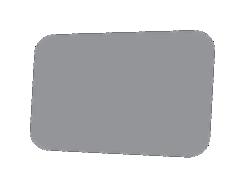

Master potions in this magical adventure through science!


WARNING

Not suitable for children under 8 years. For use under adult supervision. Read the instructions before use, follow them and keep them for reference. Keep small children and animals away from the play area. Keep the set out of reach of children under 8 years old. Small parts (choking hazard). Sharp edges. Image shown is for illustrative purposes only, parts or colours may differ. Save all information for future reference.

5 experiments


8+
Dear parents and guardians
Through play, children develop different cognitive skills. Scientific studies show that when we are having fun or making discoveries during an experiment, a neurotransmitter called Dopamine is released.
Dopamine is known to be responsible for feelings like motivation, reward and learning and that’s why experiences are related to positive feelings. So, if learning is a positive experience, it will stimulate the brain to develop various skills.
Therefore, Science4you aims to develop educational toys that combine fun with education by fostering curiosity and experimentation.
Find out below which skills can be developed with the help of this educational toy!
The educational feature is one of the key strengths of our toys. We aim to provide toys which enable children’s development of physical, emotional and social skills.
1st Edition 2024
Lisbon, Portugal
Author: Mafalda Pedro
Translation: Inês Neuparth
Scientific review: Inês Martins
Conformity revision: Rute Cesário and Susana Ferreira
Project management: Inês Martins and Joana Lemos
Product development: Mafalda Pedro
Design management: Marcos Rebelo
Packaging design: Eduardo Brito
Pagination: Jorge Faria
Illustration: Eduardo Brito
2
Motor skills Creativity Reasoning Learning Vocabulary
1. The science of magic and potions
1.1. Alchemy
1.2. The chemistry behind the magic
2. Magical potions classes
2.1. The lesson of Master Know-it-all
Potion 1. Bubbling foam
Potion 2. Invisible ink
2.2. A visit to the night fairies
Potion 3. Colour transformation
2.3. Up in the village sky with the witches
Potion 4. Fireworks
Potion 5. Dance of colours
3. Mini
All rights reserved. No part of this publication may be reproduced, stored in a retrieval system, or transmitted, in any form or by any means, electronic, mechanical, photocopying, recording, or otherwise, without the prior permission in writing or, as expressly permitted by law, or under terms agreed with the appropriate reprographic rights organization. Any unauthorised use of this book, or any violation of this book’s rights, allows the company, to be fairly compensated in legal terms, and not excluding criminal liability for those who are responsible for such violations.
3 Index
SAFETY RULES GENERAL FIRST AID INFORMATION ADVICE FOR SUPERVISING ADULTS LIST OF SUBSTANCES SUPPLIED DISPOSAL OF SUBSTANCES KIT CONTENTS
magic potions Extra activity. Magic pendant 4 4 4 5 5 6 8 8 9 10 10 10 11 12 12 13 13 14 15 15
SAFETY RULES
- Read these instructions before use, follow them and keep them for reference.
- Keep young children and animals away from the experimental area.
- Store this experimental set out of reach of children under 8 years of age.
- Clean all equipment after use.
- Make sure that all containers and/or non-reclosable packaging are fully closed and properly stored after use.
- Ensure that all empty containers and/or non-reclosable packaging are disposed of properly.
- Wash hands after carrying out experiments.
- Do not use any equipment which has not been supplied with the set or recommended in the instructions for use.
- Do not eat or drink in the experimental area.
- Do not allow chemicals to come into contact with the eyes or mouth.
- Do not replace foodstuffs in original container. Dispose of immediately.
GENERAL FIRST AID INFORMATION
- In case of eye contact: Wash out eye with plenty of water, holding the eye open if necessary. Seek immediate medical advice.
- If swallowed: Wash out mouth with water, drink some fresh water. Do not induce vomiting. Seek immediate medical advice.
- In case of inhalation: Remove person to fresh air.
- In case of skin contact and burns: Wash affected area with plenty of water for at least 10 minutes.
- In case of doubt, seek medical advice without delay. Take the chemical and its container with you.
- In case of injury always seek medical advice.
ADVICE FOR SUPERVISING ADULTS
- Read and follow these instructions, the safety rules and the first aid information, and keep them for reference.
- The incorrect use of chemicals can cause injury and damage to health. Only carry out those experiments which are listed in the instructions.
- This experimental set is for use only by children over 8 years.
- Because children’s abilities vary so much, even within age groups, supervising adults should exercise discretion as to which experiments are suitable and safe for them. The instructions should enable supervisors to assess any experiment to establish its suitability for a particular child.
- The supervising adult should discuss the warnings and safety information with the child or children before commencing the experiments. Particular attention should be paid to the safe handling of acids, alkalis and flammable liquids.
- The area surrounding the experiment should be kept clear of any obstructions and away from the storage of food. It should be well lit and ventilated and close to a water supply. A solid table with a heat resistant top should be provided.
- This set contains colourings (pigments). Colourings can stain. Keep it away from objects and fabrics.
- If materials which have not been supplied with the set are suggested and used, make sure that they are suitable for this purpose and that they are in good condition (i.e. storage and shelf life).
4
In case of poisoning by any of the components used in this set, contact the anti-poison centre or the nearest hospital.
Please consult the following link for more information: UK https://www.npis.org/ EU https://poisoncentres.echa.europa.eu/appointed-bodies
In case of emergency dial: EU 112 | UK 999 | USA & CAN 911 | AU 000
LIST OF SUBSTANCES SUPPLIED
Sodium Bicarbonate (CAS 144-55-8) NaHCO3 INGREDIENTS: SODIUM HYDROGEN CARBONATE
Blue Colouring INGREDIENTS: WATER, PHENOXYETHANOL, SODIUM BENZOATE, CI 42090, POTASSIUM SORBATE
Recommendations for substances and mixtures: Do not ingest. Avoid contact with the eyes and mouth. Use only according to the instructions. Store in tightly closed containers. Keep in a cool, dry place. Protect from moisture, direct sunlight and heat sources.
DISPOSAL OF SUBSTANCES
Do not dispose of chemical substances and / or mixtures with domestic waste and household waste. For more details, contact a competent authority. To dispose of the packaging, use the collective collection points.
5
Alchemy

Alchemy is a secret and mysterious ancient practice created in the middle ages and adopted until the 17th century. Many historians describe it as the medieval study of chemistry, while others theorise that it was pure magic.
Initially, alchemy aimed to transform common metals into gold, such as lead and copper. This transformation would only be possible with the help of a mythical substance – the “philosopher’s stone” – which would also act as the elixir of life, making whoever found it immortal.
Its practitioners, alchemists, combined chemical techniques and philosophical concepts in their creations. Furthermore, they believed in the existence of four basic elements:
DID YOU KNOW...
Scientists have since discovered how to turn an element into gold?



Glenn Seaborg was an American scientist who, in 1980, discovered how to turn a small amount of bismuth (Bi) into gold in a nuclear reactor. However, obtaining gold in this way is more complex and expensive than extracting it from mines or recycling it.
Alchemy was vital for developing modern-day chemistry and the discovery of many of the chemical elements.
Today 118 chemical elements are known and listed on the famous Periodic Table.
PHILOSOPHY studies human thought CHEMISTRY studies the substances
Little wizard, can you imagine how today’s chemistry will be seen in the eyes of scientists of the next millennium?
8
FIRE AIR EARTH WATER
1.2. The chemistry behind the magic

If you think about it, chemical reactions are like fantastic magic potions. Stop by the lab to learn more about chemical reactions and the amazing effects you can get when you mix different substances!
What is a chemical reaction anyway?
Chemical reactions involve the mixing and interaction between different substances. The substances that react are called reactants, and any substances formed by this reaction are called products of the reaction.
Reactants
All substances are made up of molecules, which in turn are made up of atoms. An atom consists of a nucleus, which comprises protons and neutrons, and electrons that circulate around the nucleus, creating the electron cloud.
Products of the reaction
From a chemical reaction, different effects can result:
• Change in colour;
• Change in temperature;
• Release of gas;
• Creation of a solid;
• Formation of a flame.
9
Image 1. Representation of the composition of a substance.
Atom
Electron (-) Neutron
Proton (+)
Molecule
2. Magical potions classes
2.1. The lesson of Master Know-it-all
Hello little wizard! Are you looking forward to your first potions class?

Master Know-it-all is the oldest inhabitant of the Village of Magic and its only wizard. He possesses a large and ancient potions book in which he writes all his recipes in invisible ink. One of his favourite potions is the bubbling foam.
ATTENTION: ask an adult for help.
POTION 1
Bubbling foam
What will you need?
Material included in the kit:

• Sodium bicarbonate

• Pasteur pipette

• Small measuring cup
• Wooden stick

• Blue colouring

• Potions tube rack






• Test tubes with cork stoppers
Extra material:
Steps:
ATTENTION: When you finish the experiment, dispose of all foodstuff used during the same.
1. Assemble the tube rack and place the three test tubes inside it.
2. With the small measuring cup, measure 3 millilitres (ml) of sodium bicarbonate and distribute them equally between the three test tubes.
3. Add one drop of liquid dishwashing detergent to each test tube.
4. With the Pasteur pipette, add 4 drops of blue colouring inside each test tube.
5. Measure 10 ml of vinegar with the small measuring cup. Distribute it equally between the three test tubes.
6. If needed, use the wooden stick to mix the content of the test tubes.
MAGIC CHALLENGE:

• Vinegar
• Liquid dishwashing detergent
What do you think of your colouredamazingfoam?
What happens?
Use different amounts of vinegar and sodium bicarbonate. Did you manage to create even larger foams?

The acid in vinegar (acetic acid) reacts with sodium bicarbonate, which is a base, and an acid-base chemical reaction occurs. In this reaction, gas is formed, carbon dioxide (CO2). The release of CO2 in the detergent bubbles leads to the formation of a large amount of foam.
10
POTION 2
Invisible ink
What will you need?
Material included in the kit:
ATTENTION: ask an adult for help.
ATTENTION: When you finish the experiment, dispose of all foodstuff used during the same.
Steps:
1. Squeeze half a lemon into the measuring cup.


• Test tube with cork stopper

• Small measuring cup

• Pasteur pipette

• Potions tube rack
Extra material:
• Water • Lemon • Air dryer
• Paper sheet • Cotton swab (or brush)
2. With the Pasteur pipette, add a few drops of water to the lemon juice. Your invisible ink is ready!
3. Place the test tube in the potions tube rack and add the ink you have prepared.
4. Dip the swab (or brush) in the ink and write a message on the sheet of paper. Wait for the ink to dry.
5. To find out your secret message, ask an adult to help you and ask them to move a hairdryer closer to the sheet of paper.

What happens?
Despite its yellowish colour, lemon juice is practically transparent. So after you let the juice dry on the paper, it becomes invisible. Most fruit juices have carbon compounds in their composition. At room temperature, these compounds are absorbed into the fibres of the paper. The hot air from the hairdryer breaks the molecular bonds in the paper and causes it to release carbon. In turn, the carbon reacts with the oxygen in the air in an oxidation reaction, which darkens the substances. This is why the lemon juice darkens and becomes visible on the paper.

has been unveiled!

DID YOU KNOW...
The oxidation reaction often occurs in fruit and vegetables? When you cut into these foods, the normally trapped inside enzymes are exposed to oxygen. The interaction between the enzymes and oxygen causes the food to oxidise (brown).

11
2.2. A visit to the night fairies

At night, the village fairies use an amazing potion of colour transformation to camouflage themselves.
POTION 3
Colour transformation
What will you need?
Material included in the kit:






• Test tubes with cork stoppers

• Small measuring cup

• Sodium bicarbonate

• Potions tube rack

• Pasteur pipette
Extra material:
• Hot water • Red cabbage
• Vinegar • Bowl • Marker
• Colander • Cup
Welcome!
It’s so nice to finally meet you, little wizard! We have a fantastic potion to show you. Shall we begin?
ATTENTION: ask an adult for help.
ATTENTION: When you finish the experiment, dispose of all foodstuff used during the same.
Steps:
1. Ask an adult to prepare the red cabbage water. Put a sliced red cabbage leaf in a bowl and pour hot water. Wait for half an hour. Using a colander, filter the liquid into a cup and leave it to cool.
2. Place the three test tubes in the potions tube rack. Use a marker to label the tubes A, B and C.
3. Add 10 ml of cabbage water to each tube using the small measuring cup.
4. Follow these steps:
5. Close the test tubes with the stoppers and mix well, shaking them.

What did you think of this magical colour transformation?
The pH is a property of all substances to classify them as acidic, neutral or basic. In this experiment, red cabbage water acts as a natural pH indicator. In the presence of an acid, such as vinegar, it shows a pink colour. In the presence of a base, such as baking soda, it turns blue.

12
½ Sodium bicarbonate 2 �� Vinegar A B C
2.3. Up in the village sky with the witches
If you keep an eye on the starry sky of the Village of Magic, you can see bursts of colour against the blue background. The witches are responsible for this magic show. With their flying brooms, they leave a colourful trail wherever they go. Learn how to recreate this magic with the fireworks potions and the dance of colours!

POTION 4 Fireworks Material included in the
What will you need?

• Pasteur pipette

• Small measuring cup

• Blue colouring
Extra material:
• Sheet of paper • Water
• Cooking oil
• Clear cup
Density = Mass Volume
Steps:
Look who it is...
the new village wizard has come to pay us a visit! Are you ready to start this colourful adventure through the village sky?
ATTENTION: ask an adult for help.
ATTENTION: When you finish the experiment, dispose of all foodstuff used during the same.
1. Fill half of the cup with water.
2. Add 50 ml of cooking oil to the clear cup using the small measuring cup.
3. Using the Pasteur pipettes, carefully put a few drops of colouring into the cup.
4. Finally, cover the cup with the paper sheet.

Watch closely what happens in the cup! What do you see?
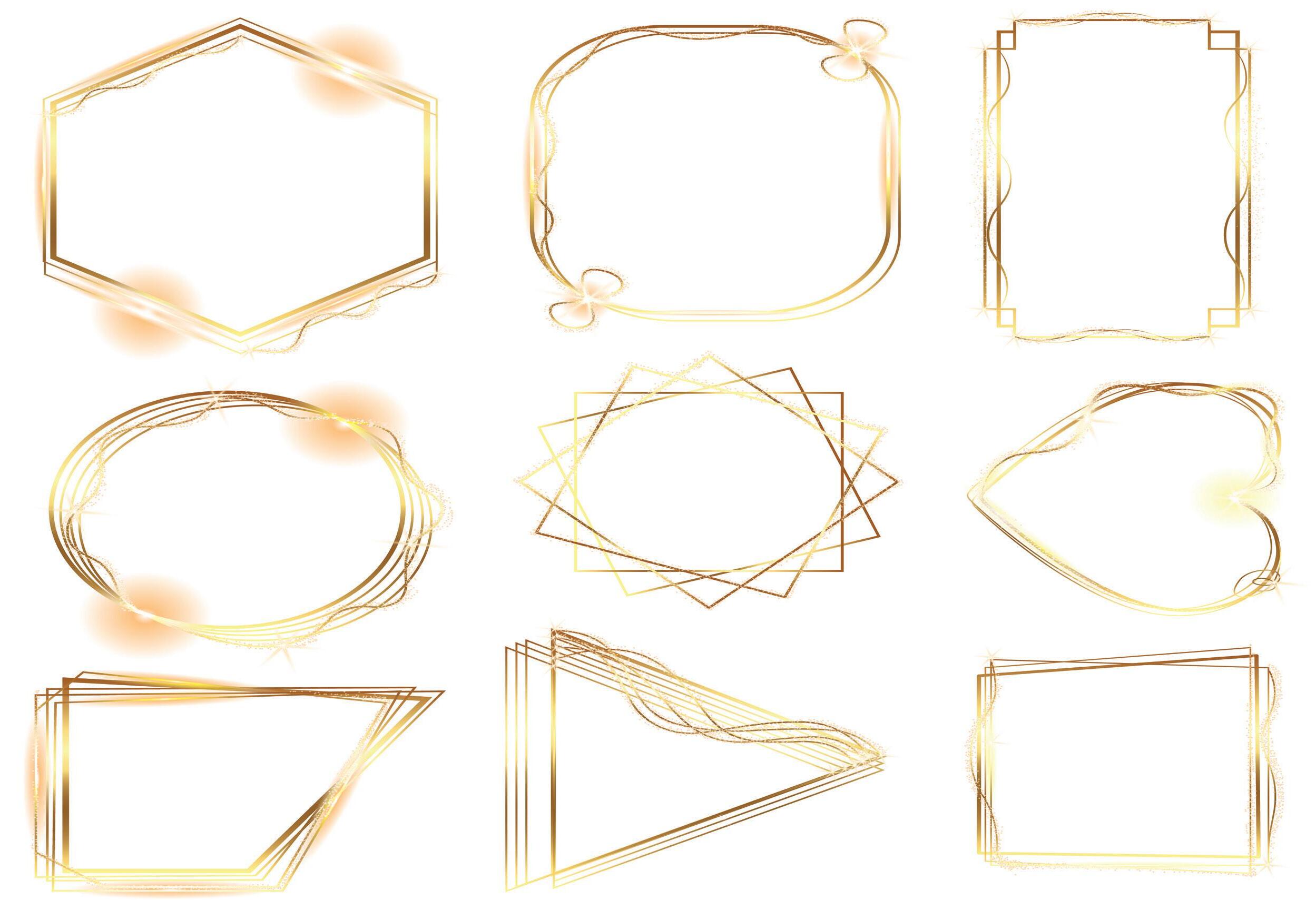
DID YOU KNOW...
Density is one of the most studied chemical properties?
Density is the result of dividing the mass over the volume of a body.
A drop of water is heavier than a drop of oil of the same size, so we say that water is denser than oil.


kit:
Oil Water
POTION 5
Dance of colours
What will you need?
Material included in the kit:

• Pasteur pipette

• Small measuring cup
Steps:
ATTENTION: ask an adult for help.
ATTENTION: When you finish the experiment, dispose of all foodstuff used during the same.
1. Put a bit of milk in the deep plate, about 3/4 of the capacity. Let the milk rest for a few minutes.

• Blue colouring
Extra material:
• Liquid dishwashing detergent
• Fat milk • Toothpicks
• Deep plate
DID YOU KNOW...
Is it the high surface tension of water that allows insects to walk on it?
Common pond skaters are semi-aquatic insects with long, hairy legs that allow them to spread their weight over a wide area and move on the water’s surface.
2. Using Pasteur pipettes, add a few drops of blue food colouring to the milk. Make sure that the drops are on the surface and away from each other.
3. Put some liquid detergent in the small measuring cup. Dip the tip of the toothpick into the detergent.
4. Place the toothpick, with the detergent, in the middle of the drops of colouring.
Surface tension is a property of liquids that holds their molecules together at the surface, resembling a membrane.





What happens?
When you put the colouring agent on the surface of the milk, they don’t mix. However, if you put the toothpick with detergent on the drops of colouring, they move apart and create an explosion of colour! This happens because the detergent breaks the bonds between the milk molecules and breaks the surface tension, causing the molecules to mix, as you observed!
14
Image 2. Surface tension and forces of attraction between water molecules.
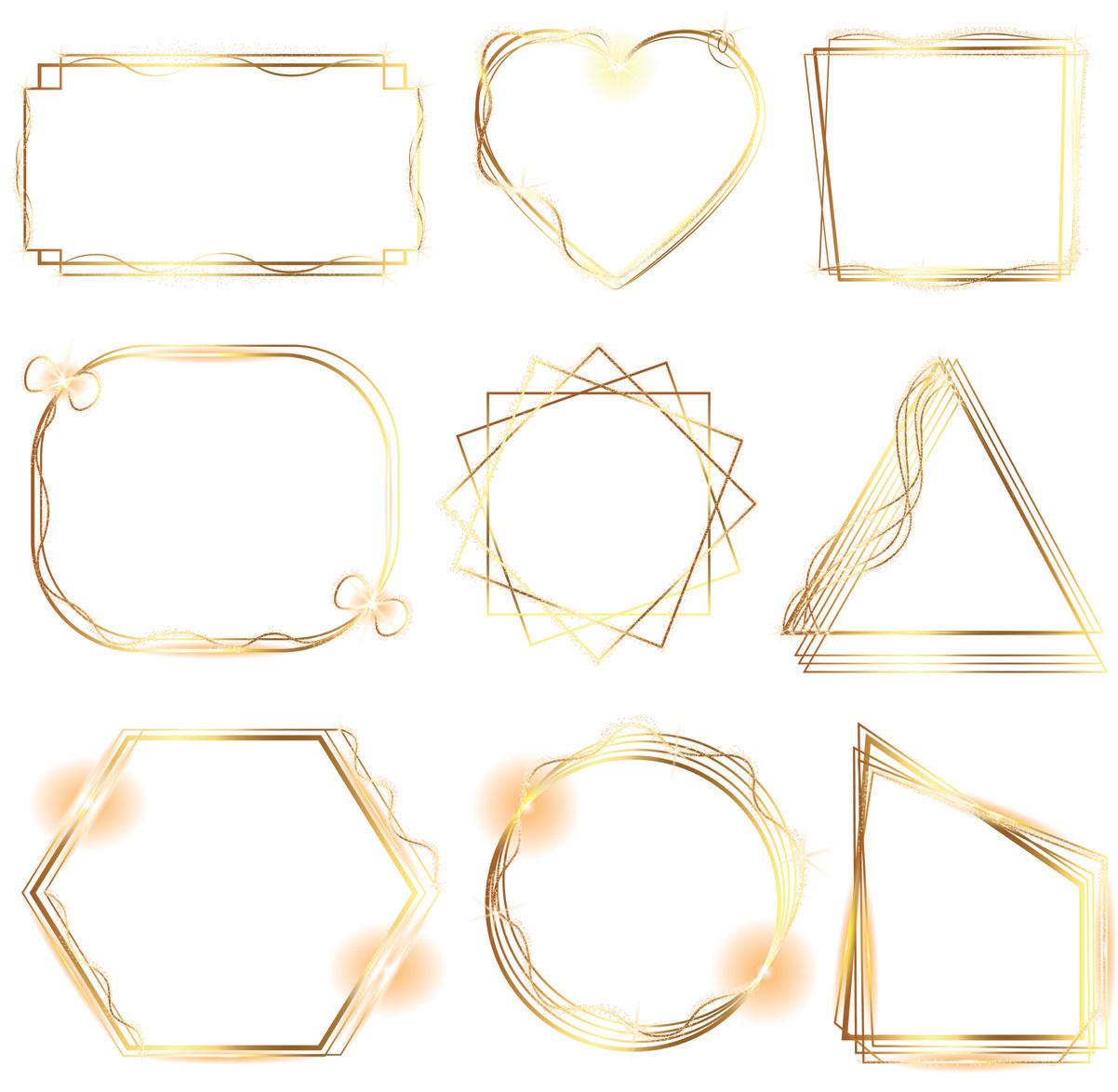

Follow these suggestions or create your own recipes!

Steps:
1. Draw and cut out a small rectangle on the paper.
2. Write your magic recipe with the invisible ink or a pencil.
3. Roll up the secret recipe, attach it with the woollen string, and place it inside your bottle.
4. Close the bottle with the cork stopper.


What will you need?
Material included in the kit:
• Woollen strings
• Mystery stickers
Extra material:
• Mini potion • Scissors • Pen
• Water-based glue (optional)
• Potion bottle with cork stopper
• Wooden stick
• Small measuring cup
• Pasteur pipette
• Blue colouring
Extra material:
• Little shells (optional)
• Sand (optional)
• Cooking oil
• Water
Steps:
1. Put layers of sand, gravel and soil in the bottle.
2. Now, add the dried flowers to the jar with the wooden stick.
3. Close the bottle with the cork stopper.
Steps:
1. Put 5 ml of water and one drop of blue colouring into the cup using the Pasteur pipette. Stir well with the wooden stick.
2. Pour the coloured water into the bottle and fill it up to the neck with cooking oil.
If you wish, add sand and shells.
3. Close the bottle with the cork stopper.
1. Make sure your mini potion is sealed correctly. Ask an adult to glue the stopper with water-based glue if you want.
2. Name your mini potion! Write it on the label and stick it to your jar.
3. Attach the woollen string to the neck of the jar and tie a knot so that it’s secure.
4. Choose how you want to wear your pendant! Do you prefer it as a necklace or as a bracelet? Use two woollen strings if you need to. Place your magic pendant around your neck or wrist, tie a knot and cut off the excess yarn.
Your magic pendant is ready! Carry it with you always and show it to all your friends!
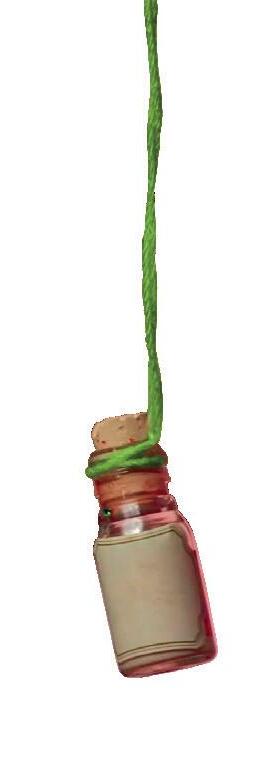 Mini Potion 3. Magic ocean
Mini Potion 3. Magic ocean
www.keycraftglobal.com P05












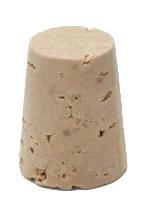

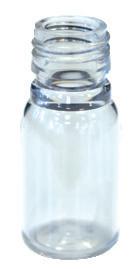






































 Mini Potion 3. Magic ocean
Mini Potion 3. Magic ocean